Polka dot
Polka dot is a pattern consisting of an array of large filled circles of the same size.[1]
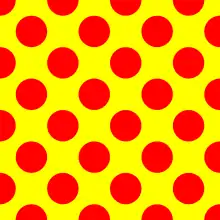
Polka dots are commonly seen on children's clothing, toys, furniture, ceramics, and Central European folk art but they appear in a wide array of contexts. The pattern rarely appears in formal contexts, and is generally confined to more playful attire such as bathing suits and lingerie. Occasionally, white-on-black small dots appear on more formal clothing.
Etymology
It is likely that the term originated because of the popularity of the polka dance around the same time the pattern became fashionable, just as many other products and fashions of the era also adopted the "polka" name.[1]
Usage
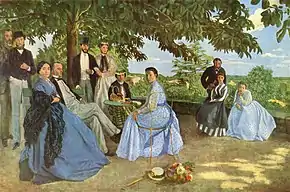
In 1962, DC Comics introduced Polka-Dot Man with irregularly-sized and differently coloured dots.
Some people associate polka dots with Venezuelan fashion designer Carolina Herrera, who used polka dots on most of her dresses during the late 1980s and early 1990s, as well as on the boxes of perfume Carolina Herrera, Herrera For Men, Aquaflore and Flore.[2]
Much of the Japanese artist's Yayoi Kusama's work features a polka dot motif.[3][4]
The polka dot also appears in popular music. "Itsy Bitsy Teenie Weenie Yellow Polka Dot Bikini" is a novelty song telling the story of a shy girl in a very revealing bathing suit who stays immersed in the ocean water to hide from view. It was written by Paul Vance and Lee Pockriss and first released in June 1960 by Brian Hyland. Before that however, "Polka Dots and Moonbeams" was a popular song with music by Jimmy Van Heusen and lyrics by Johnny Burke, published in 1940. It was Frank Sinatra's first hit recorded with the Tommy Dorsey Orchestra. The song is one of the top 100 most-frequently recorded jazz standards[5] with arrangements by Gil Evans and others and notable recordings by Lester Young, Sarah Vaughn and many others.
The 1943 Twentieth Century Fox Technicolor musical film The Gang's All Here, directed by Busby Berkeley, featured a large production number "The Polka-Dot Polka".[6] The song was written by Harry Warren and Leo Robin, referencing the 19th Century Polka Dot craze in the lyric, and sang by Alice Faye with the Busby Berkeley dancers. [7]
.jpg.webp) Girl wearing polka dot dress
Girl wearing polka dot dress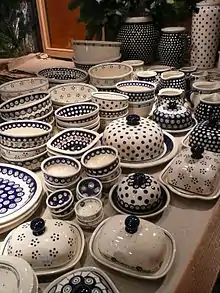 Polish ceramics
Polish ceramics German ceramics
German ceramics
See also
| Look up polka dot in Wiktionary, the free dictionary. |
| Wikimedia Commons has media related to Polka dots. |
References
- "polka", Oxford English Dictionary,
On account of the popularity of the dance, polka was prefixed as a trade name to articles of all kinds (cf. quot. 1898 in 1); e.g. the polka curtain-band (for looping up curtains), polka-gauze, polka hat; {polka-dot}, a pattern consisting of dots of uniform size and arrangement; also fig., attrib. or as adj., and as v. trans.; hence polka-dotted adj.
- "Embroidered Polka Dots Lace Top". www.joycard.gr. Retrieved 15 November 2016.
- Lylynguyen. ""Queen of Polka dots" holds exhibit in Vietnam". VX Art News. Archived from the original on 23 October 2013. Retrieved 13 May 2014.
- Nachmann, Ron. "Of obliteration and polka dots: films on the vividly obsessive art of Yayoi Kusama". Dangerous Minds. Retrieved 13 May 2014.
- "Jazz Standards Songs and Instrumentals (Polka Dots and Moonbeams)". www.jazzstandards.com. Retrieved 2018-01-23.
- Gregory May (2008-10-17), The Polka-Dot Polka, retrieved 2018-10-24
- The Gang's All Here, retrieved 2017-09-25
Further reading
- Peacock, John (2007). Fashion Since 1900: The Complete Sourcebook. Thames & Hudson. ISBN 0-500-51345-7
- Stewart, Jude (2010). "Seeing Spots: From lepers to paranoia, the twisted history of the polka dot" Slate
- Welters, Linda and Cunningham, Patricia A. (eds.) (2005). Twentieth-century American Fashion. Berg. ISBN 1-84520-072-1
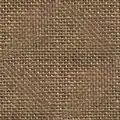
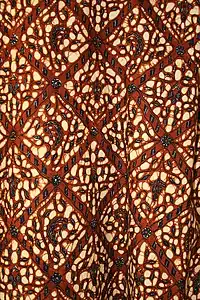
.svg.png.webp)